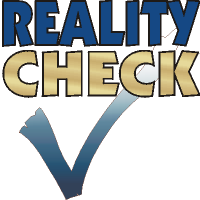A common bit of advice for living a good life is, “Be kind.” I certainly agree. Kindness will likely result in better relationships, quality of life, and more happiness than being nasty.
It’s obvious what it means to “be kind.” Or is it?
Specifically, what does kindness look like? How do you know when you are treating someone kindly? Is that warm, fuzzy feeling enough evidence? When faced with a difficult choice, how do you determine what action is kindest? It’s not always a simple determination.
Kindness isn’t the only behaviour that invites these questions. Some of Dr. Glasser’s caring habits—supporting, accepting, encouraging—could prompt the same questions.
For example, Marti is considering quitting her job and taking her chances on what you perceive to be a risky endeavour.
Your questions: “Is it kind to support her in this choice if I think that it will inevitably fail? Is it kind to accept her rationalization of this choice when I see so many practical problems? Is it kind to encourage her in what I think is a poor decision?”
Supporting, accepting, encouraging are all positive behaviours. But what would they look like here?
According to Dr. Glasser, one thing that we can do for others is provide information.
In this situation, I would first ask Marti if she wants it! If she doesn’t, but I proceed to tell her anyway, she may choose to resent what she perceives as my interference. Likewise, I may choose to resent her lack of regard for my valuable input. So if Marti isn’t interested, then it’s likely better for the relationship if I just wish her well and stay out of it.
If Marti says she does want to hear what I would like to say, then I would take that opportunity to tell her. Ultimately, though, it’s not for me to say whether she “should” make her choice in one direction or another. It is her life. Once I have laid out what I perceive to be the cons (and possibly the pros) of the choices, then I’ve done my part.
Another example of where kindness may be unclear is in the area of expectations of people for whom we have some responsibility. For example, our children, our students, perhaps even to some degree…our spouses!
Mikey clearly has the potential to do much better in school than he is. He’s just not into it; he doesn’t care; he sees no value.
Which is kinder: To challenge Mikey to be his best? Or to let his lackadaisical performance go by without comment, thinking perhaps he’ll grow out of it when he finds himself?
Again, providing information may be the kindest action. Depending on your relationship and level of responsibility for Mikey, providing information sooner in his life, rather than later, can help him make decisions that could have a lasting effect on his career choice and earning potential.
The face of kindness probably doesn’t look like haranguing Mikey about studying. But it might look like a visit to an interesting workplace, or setting up a conversation with someone Mikey admires where he can see what character traits and studies might help to launch him on the life that he wants.
There are many specific situations where there are real questions about what kindness looks like. Is it kind to provide information to convince someone that they have been wronged and are now a victim? Or is it kind to help someone clearly view their present situation and provide information for how they might improve it?
I do believe that it is important to be kind. However, the actions that correspond to kindness are not always crystal-clear. So I hope you’ll choose to be kind

Greetings!
Welcome to Reality Check:
articles and observations inspired by the work of Dr. William GlasserCategories
